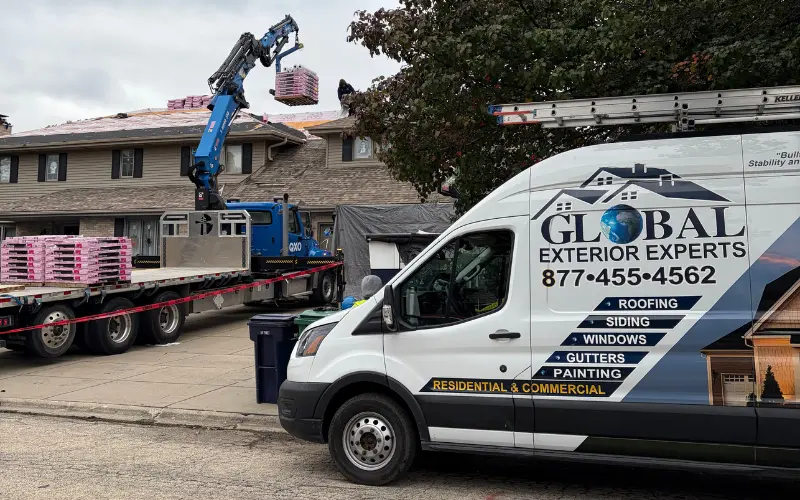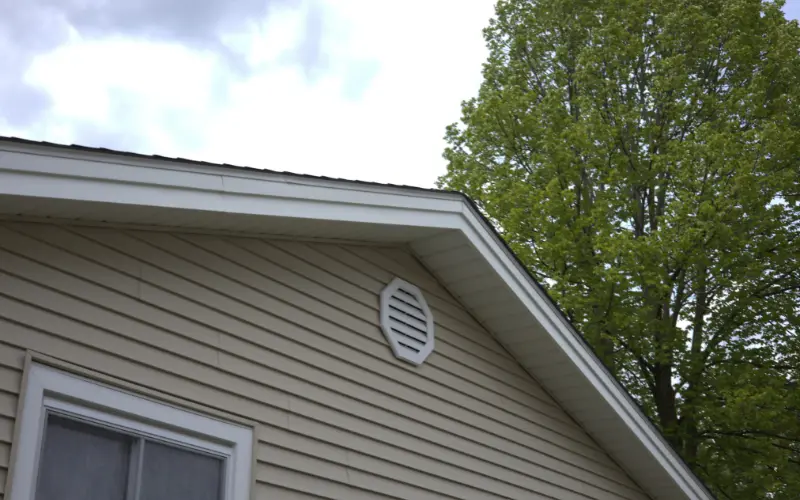A typical roof replacement can take 1-2 days for average homes under 2,500 square feet but several factors affect this timeline such as roof size, material type, weather conditions, structural issues, and complexity of your roof. Making sure you understand these variables helps you plan effectively and avoid surprises while the roofing company works.
The Real Answer: What Determines How Long A Roof Replacement Takes
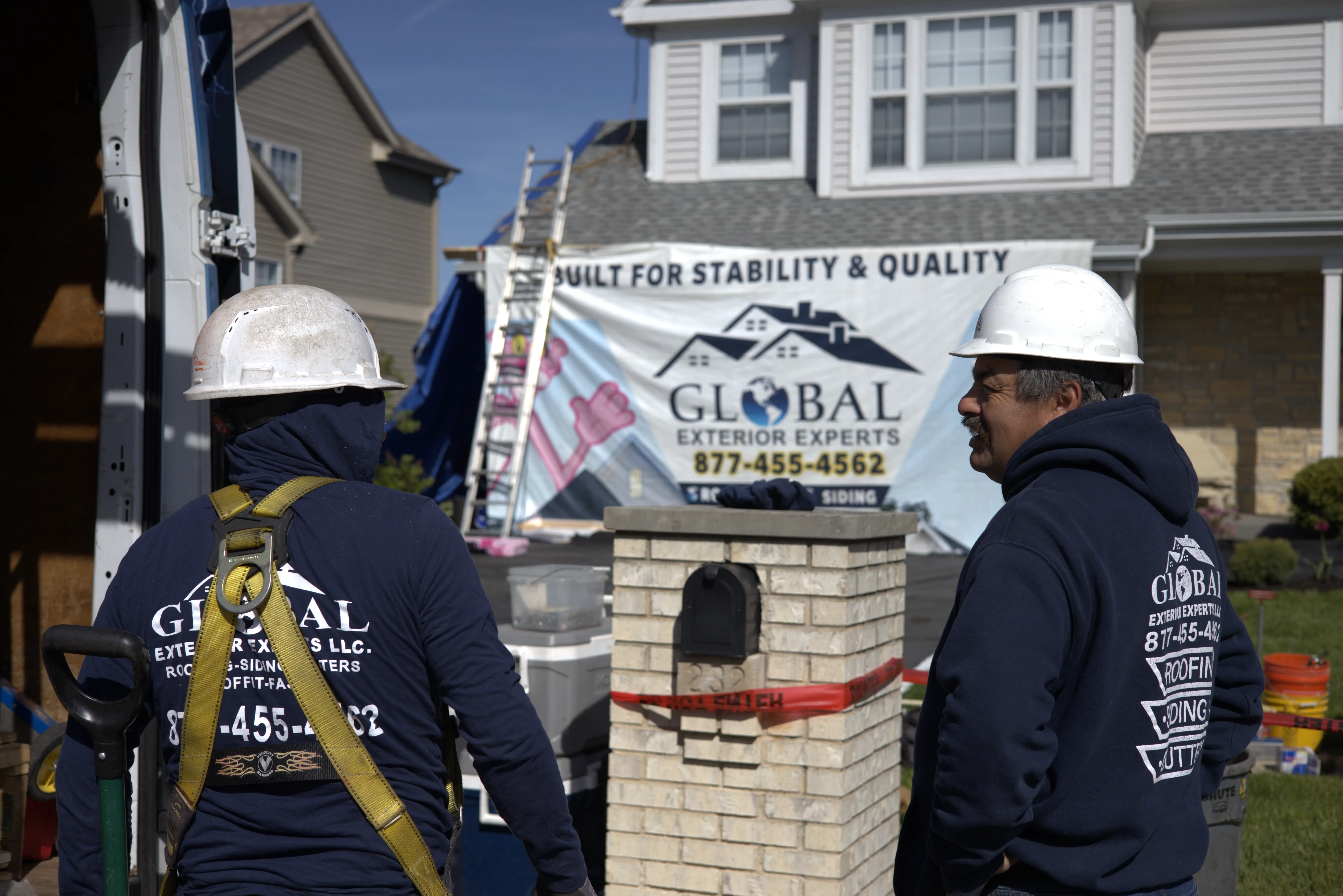
Your neighbor got a new roof in one day but your cousin's took four. Why the difference?
The size of your roof matters. A 1,200-square-foot ranch tears off and replaces faster than a 4,000-square-foot two-story colonial but the size is just the starting point. Things like the roof pitch (steepness of the roof), the number of valleys and hips, how many chimneys and vents poke through, and whether there's easy access to the roof all play a role in how complex the project will be.
Material choices can change everything too. Asphalt shingles install quickly because they come in large sections and most roofers can do this easily, metal roofing takes longer because of it's manufacturing process, and clay tiles? You're looking at a week or more because each tile goes on individually and requires specific underlayment, battens, and skilled workers.
Then there's the midwestern weather. Rain shuts down the job immediately (nobody's working on an exposed roof deck in a downpour). Extreme heat slows crews down. Cold temperatures below 40 degrees cause problems with shingle adhesive, which means extra steps and extra time. Not to mention our freeze-thaw cycles reveal underlying issues that affect how well a roof was put on when it was replaced.
Breaking Down the Timeline by Roof Type
Alright, let's talk specifics. Different materials and roof sizes don't just affect cost; they completely change how long you're dealing with trucks in your driveway.
Small homes (under 1,500 sq ft):
- Asphalt shingles: 1 day
- Metal roofing: 1-2 days
- Architectural shingles: 1 day
Medium homes (1,500-2,500 sq ft):
- Asphalt shingles: 1-2 days
- Metal roofing: 2-3 days
- Wood shakes: 3-5 days
- Tile (clay or concrete): 5-7 days
Large homes (2,500-4,000+ sq ft):
- Asphalt shingles: 2-3 days
- Metal roofing: 3-5 days
- Premium materials: 5-14 days
These numbers are assuming normal conditions but add a day if your roof is particularly steep, add another if access is difficult or if there are multiple stories with different roof level.
What Happens In The Prep Phase
.webp)
Here's what nobody tells you: the clock doesn't start when crews arrive. There's a whole prep phase that affects your overall timeline, even if work isn't happening on your actual roof yet.
Permitting: Depending on your municipality pulling permits takes anywhere from same day to two weeks but lucky some local jurisdictions move fast. Now others require plan reviews, engineering stamps for certain roof types, and approval from multiple departments but they all vary, and some townships have stricter codes than others. You can't start work without permits and if you do, you'll really regret it when the inspector shows up.
Material ordering: Standard asphalt shingles? Usually in stock and delivered in days. Custom colors, premium materials, or anything specialized and you might wait two to six weeks. Supply chain issues hit roofing materials just like everything else so make sure you order early.
Scheduling: Good roofing companies book out weeks or months in advance during peak season but oftentimes the actual work might take two days. Our weather window is also ideal for roofing from April through October.
The Hidden Timeline Killers
You scheduled the work, materials arrived, crew shows up bright and early, but why is it still taking longer than usual? Here's some culprits
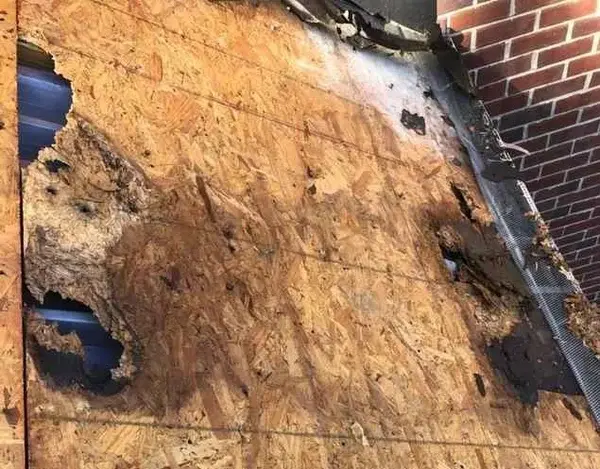
Rotten decking: This is the big one. If water's been leaking for years the plywood or OSB deck underneath is compromised. Our freeze-thaw cycles accelerate deck deterioration especially if ice dams caused water infiltration a while back. Here the crew has to stop, cut out damaged sections, and install new decking and that can be an extra day minimum, sometimes two if the damage is extensive.
Code violations: Building codes change. Your roof from 1985 usually doesn't meet 2025 standards so maybe you might need additional ventilation, different flashing details, or updated fire barriers. Local code requirements have gotten stricter over the years, particularly around wind resistance and proper ventilation in our climate. Fixing these issues before the new roof goes on adds time but saves you the headaches down the road.
Ice dam damage: If you've had ice dams then there's often hidden damage to fascia boards, soffits, and the edge of the roof deck. Winter damage doesn't always show until a tear off happens.
Structural concerns: Sagging rafters, inadequate framing, or load issues require a structural fix before any new roofing material can go on. Especially through our harsh winters, heavy snow loads over the years can stress roof framing and cause it to sag, bend, or fail. This can add days or even require bringing in a separate contractor first to fix the elephant in the room.
Here's the kicker: you won't know about these issues until the tear off starts. Make sure you budget extra time and money just in case.
Weather: The Ultimate Wild Card
You can control almost everything about your roof replacement except the weather, and weather will absolutely control your timeline.
Rain is just a non negotiable. Work has to stop, we make sure crews tarp everything, safely secure the site, and come back when it's dry. A quick pop up summer thunderstorm might add only a couple hours. An all day rain might push the job to tomorrow. A week of spring storms? You're just going to have to wait a week.
Cold weather also complicates things. Asphalt shingles need warmth to seal properly and anything below 40 degrees and the adhesive strips don't activate correctly. Late fall and early spring installations often hit this threshold especially with morning temperatures. Crews can use special cold weather techniques, but it just slows everything down. Even some materials (like certain synthetic products) have temperature limits and simply can't be installed in cold conditions.
Extreme heat isn't ideal either. Our summer heat waves push temperatures into the 90s and above and this just causes crews to work slower, take more breaks, and productivity drops. Safety always matters more than speed.
Wind also really affects steep or high roofs because if gusts are strong enough to blow materials around or create safety hazards, work has to stop. Midwest wind patterns, especially during spring and fall, can create unexpected delays.
Winter installations are possible but not really ideal. December through February work requires special planning and often takes longer due to shorter daylight hours and the temperature challenges.
Cost Considerations: What You'll Actually Pay
Of course none of this comes free and your timeline and your budget are connected. Regional pricing reflects local labor rates and material costs.
Asphalt shingle replacement:
- Small roof (10-15 squares): $5,000-$8,500
- Medium roof (20-30 squares): $8,500-$16,000
- Large roof (35-50 squares): $16,000-$28,000
Metal roofing:
- Add 50-100% to the asphalt costs above
- Longer lifespan (40-70 years) justifies the premium
- Performs well in our snow and ice conditions
Premium materials (tile, slate, wood):
- $15,000-$50,000+ depending on size and material
- Installation takes longer, which increases labor costs
- Some materials handle freeze-thaw cycles better than others
Hidden costs that affect timeline:
- Permit fees: $150-$500 (varies by municipality)
- Dumpster/disposal: $300-$800
- Decking replacement: $2-$4 per square foot
- Ice dam prevention upgrades: $500-$2,000
- Structural repairs: varies wildly, $500-$5,000+
Faster doesn't always mean cheaper. A crew that rushes through in one day might miss details. Quality work takes the time it takes.
Roof Complexity: Why Some Jobs Take Longer
Two houses, same square footage, same material. One takes a day, the other takes three. The difference? Complexity.

Pitch (steepness): Walkable roofs (4/12 to 6/12 pitch) move quickly while steep roofs (8/12 and up) require safety equipment, slower movement, and more careful material handling. Every aspect takes longer when you're harnessed up on a 12/12 pitch.
Valleys and hips: A simple gable roof has two planes. Easy. A hip roof with multiple valleys, dormers, and intersections? Every valley needs careful waterproofing, precise cuts, and extra flashing. More valleys equal more time. Proper valley installation matters even more in our climate where water and ice backup can cause serious damage.
Penetrations: Chimneys, skylights, plumbing vents, bathroom fans, and any other thing that pokes through your roof requires custom flashing and careful integration. Five penetrations take longer than two.
Multiple levels: Single-story ranch? Straightforward. Two-story with a garage, then the main house, then a second level? Crews are constantly moving equipment, adjusting safety gear, and working around multiple roof heights.
Accessibility Issues You Might Not Consider
Getting materials on your roof and old materials off is half the job but If access is difficult, everything slows down.
Landscaping: Mature trees overhanging the roof line look great but create obstacles, extra problems, and often an easy route for animals onto your roof. Thick bushes below the eave line mean crews can't set up easily. Sometimes landscaping needs some trimming before work starts too.
Tight spaces: Suburban lots with houses close together also limit where trucks can park and where debris can be thrown. Narrow driveways, no street parking, or HOA restrictions on where equipment can sit all add time.
Fencing: Locked gates, privacy fences without access points, or decorative fencing that can't be temporarily removed only slow material delivery.
Paving: A concrete driveway right up to the house is perfect, but a gravel driveway 50 feet away with a lawn inbetween; crews are going to have to make extra trips to make sure they protect the lawn, and will work harder to move materials.
What to Expect on Installation Day
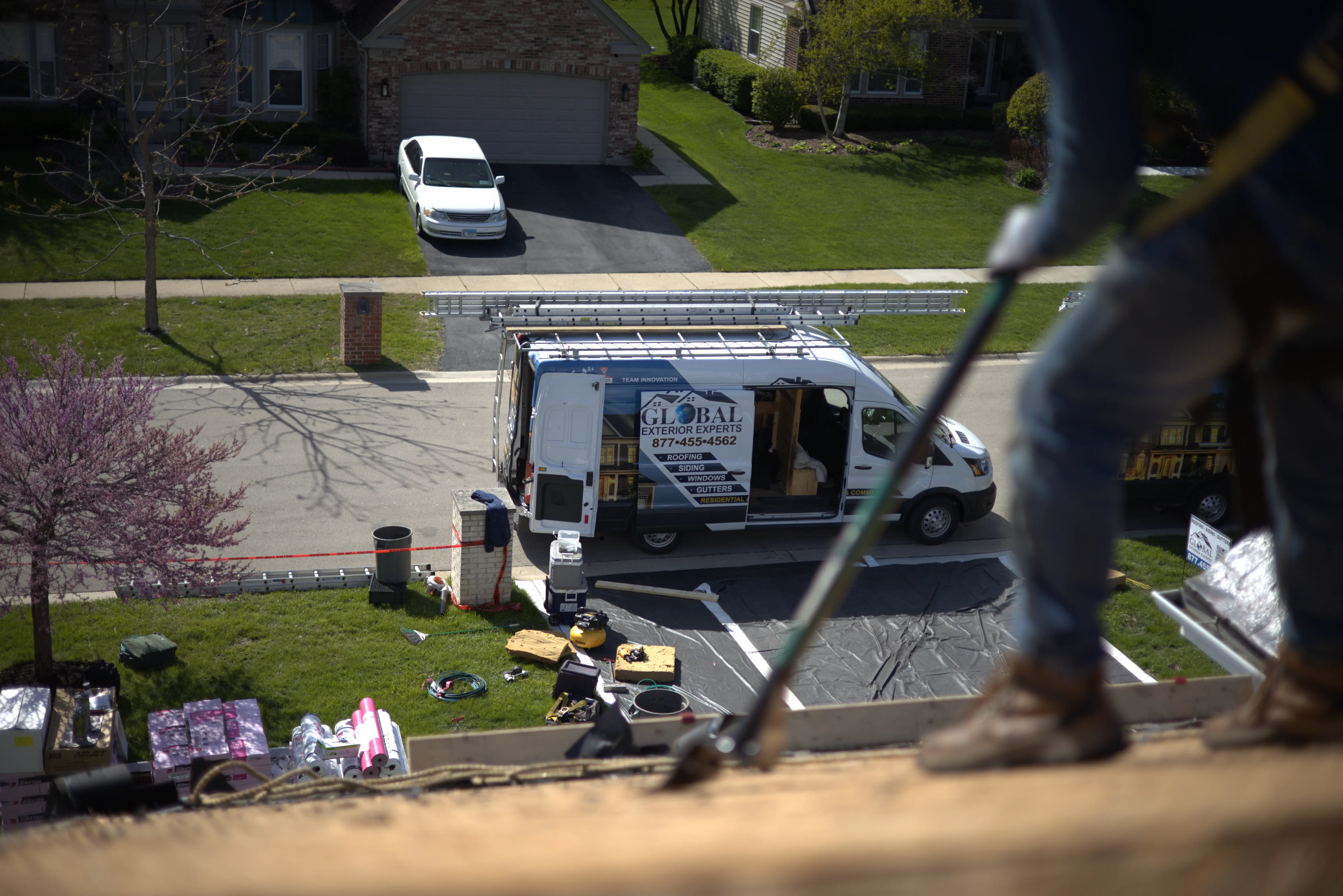
You're scheduled, materials are here, permits are pulled. Now what?
Morning (7-9 AM): Crews arrive, set up safety equipment, lay tarps for debris, and start tearoff. This is the loudest part. Expect constant banging, scraping, and the sound of old shingles hitting the dumpster. Tearoff usually takes 2-4 hours depending on roof size and how many layers are coming off.
Midday (10 AM - 2 PM): Next new underlayment goes down, flashing gets installed, and shingle installation begins. We use ice and water shield at critical areas like eaves and valleys, which is essential for protecting against our winter weather. This is when crews inspect the deck for damage but If problems show up, this is when you tend to find out.
Afternoon (2-6 PM): Finally shingle installation continues. On a one day job crews finish up tend to finish up now, install ridge caps, complete flashing details, and do a final inspection. Cleanup happens throughout the day, but final site cleanup is the last step.
Multi-day jobs: If your roof takes longer just expect crews to secure the site each evening with tarps if necessary. They'll return the next morning and continue where they left off.
Planning Around Your Roof Replacement
Smart planning minimizes disruption so here's how to make those one to three days as painless as possible.
Clear the driveway and area around the house: Move vehicles, bikes, grills, and patio furniture. Crews need access and debris will fly.
Protect your stuff inside: Vibrations shake the whole house. Pictures on walls, items on shelves, and anything fragile might shift or fall so make sure you remove or secure all valuables.
Plan for noise: Work from home? Just find a coffee shop for the day. It will most likley be loud, all day.
Communicate with neighbors: Give them a heads up about the noise, trucks, and timeline. Courtesy always prevents complaints.
Have a bad weather backup plan: If work gets delayed, know what that means for your schedule. Spring and summer storms pop up quickly, so flexibility helps. Remote work flexibility helps here.
Consider seasonal timing: Late spring through early fall offers the most predictable weather and longest daylight hours. Avoid scheduling roof replacement during periods of extreme heat or when temperatures consistently drop below 40 degrees.
When to Add Extra Time to Estimates
Some situations scream "this will take longer than quoted." Watch for these red flags.
If your roof is over 20 years old and you've had leaks, just budget extra time for repairs. If you've experienced ice dams in past winters, expect hidden damage that extends the timeline. If you're choosing anything other than standard asphalt shingles, add at least a day to whatever to estimate you get.
Multiple stories, steep pitches, or have lots of architectural details? Add time. Have limited access, narrow lots, or close- set homes? Add more time. Spring or fall scheduling when weather is unpredictable? Add an extra day or two.
Homes built before 1990 often have surprises once tearoff begins and with older construction standards, previous amateur repairs, or deterioration from decades of freeze-thaw cycles mean you'll be more likely to need extra work.
The Bottom Line: What You Need to Know
Most residential roof replacements take one to two days of actual work. Your specific timeline depends on size, material, weather, complexity, and what's hiding under those old shingles.
The bigger question isn't just "how long?" It's "am I prepared for what might extend that timeline?" Smart planning usually means assuming the job takes longer than quoted and being pleasantly surprised when it doesn't.
Get multiple quotes that include estimated timelines. Ask what factors might extend the schedule. Verify the roofing company can handle weather delays without abandoning your half finished roof and make sure you check that they pull proper permits and follow local building codes. Also make sure they understand how to handle our climate-specific challenges like ice dam prevention and proper ventilation.
Your roof replacement will happen faster than you think assuming normal conditions. Plan for two days, budget for surprises, and you'll handle whatever timeline actually happens without stress.
The best time to replace your roof is before winter sets in too. Avoid the rush by scheduling in late spring or summer, when the weather is most cooperative and crews can work efficiently.

.webp)
